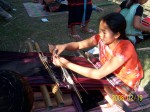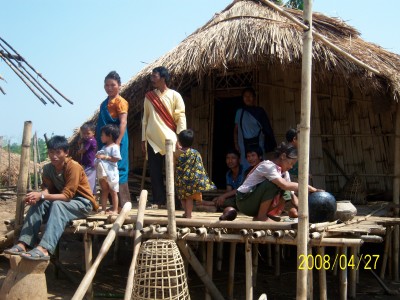I’m really thankful to Mr. Bouchery Pascal, Lecturer of Anthropology, University of Poiters, France for his keen interest in studying about the karbis and allowing me to publish his works in my blog. He has been working on the karbis for the last one month with the information I have been providing and he is really showing his expertise by completing the following list of terminology at a very unexpected span of time.He has visited India several times, and conducts research on Tibeto-Burman speaking societies of North Eastern States, including Karbis . It really gives me satisfaction to provide all the information he wants which are within my reach. I wish him all the very best and foreseen that the day will not be far when he will be a known man among the karbis for his contribution towards them at par with Charles lyall, who was the first man to study the society of the Karbis.
KARBI KINSHIP TERMINOLOGY
1. Phu’ : FF, MF
2. Phi : FM, MM
3. Po’ : F
4. Pai/pei : M
5. Pesar : FeB, FeBW, MeZ, MZH+, HMeB
6. Punu : FyB, MZH-, HMyB
7. Pinu/Penu : FyBW, MyZ, WFZ (pinu)
8. Ni : FeZ (m. sp. eventually with suffix -sarpi), FeZ (f. sp., eventually with suffix -hai denoting respect), FyZ, (m. sp., along with bai), MBW (m. sp., with suffix -hai), MBW (f. sp.), MBSW (m. sp), FZSW (m. sp.), WBW (m. sp.), WM (with suffix -hai), WMZ (with suffix -hai), HM (with suffix -hai), HMZ
9. Lok : FZH, HF (f. sp., with suffix -hai denoting respect)
10. Ong : MB (m. s., with suffix -hai denoting respect), WF (with suffix -hai), WFB (with suffix -hai), MB (f. sp.), MBS (m. sp., with suffix -sar), MBS (f. sp.), MBSS (m. sp. with suffix -so) MBSS (f. sp.), WB (m. sp., with suffix -sar)
11. Ik : eB, yB (f. sp.), FBS+, MZS+
12. Muh’ : yB (m. sp.), FBS-, MZS-
13. Ni/bai : eZ (m. sp.), FBD+, MZD+,
14. Bong’ : yZ, FBD-, MZD-
15. Teh/Bai : eZ (f. sp.), eBW (f. sp.), FZSW (f. sp.)
16. Meh : FZS (m. sp., eventually with suffix -hai denoting respect), ZH (m. sp., eventually with suffix -hai)
17. Neng : MBD (f. sp., with suffix -hai denoting respect), FZD (f. sp., with suffix -so), BD (f. sp.), yBW (f. sp.), yZH (f. sp.), MBSW (f. sp.), BSW (f. sp.), HZ, HFZ (with suffix -hai),
18. Tepi/ Tipi : eBW (m. sp.), MBD+ (m. sp.), WZ+ (m. sp.)
19. Korpi : yBW (m. sp.), MBD- (m. sp.), WZ- (m. sp.)
20. Tepo : eZH (f. sp.), FZS+ (f. sp.), HB+
21. Korpo : FZS- (f. sp.), HB-
22. Philipi : FZD (m. sp.), ZD
23. Sopo : S, BS (m. sp.), ZS (f. sp.), BDH (f. sp.)
24. Sopi : D, BD (m. sp.), ZD (f. sp.), BDH (m. sp.), ZDH (f. sp.)
25. Ikso : BS (f. sp.)
26. Munhai : SW, BSW (m. s.), ZSW (f. s.)
27. Usha : DH (m. sp., with suffix -hai denoting respect), ZS (m. sp., with suffix -hai), BDH (m. sp., with suffix -hai), HZS, ZDH (f. sp., with suffix -hai)
28. Phu : ZDH (m. sp.)
29. Su’po : SS
30. Su’pi : SD
31. Piso/ Peso : W
32. Penan/ Pengnan : H
33. Phuso : WMB
To read the above table :
F = father; M = mother, eB = elder brother; yB = younger brother; Z = sister; S = son; D = daughter; W = wife; H = husband; + = older than speaker; – = younger than speaker; m. sp. = male speaking; f. sp. = female speaking.
So FeZS should be read as father’s elder sister’s son.
For More information Please write to mphangcho@yahoo.com





























